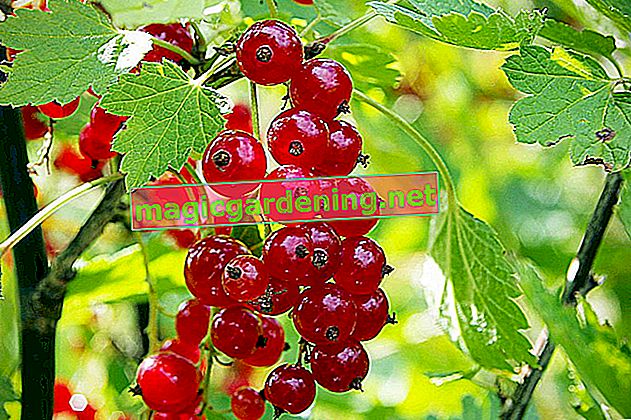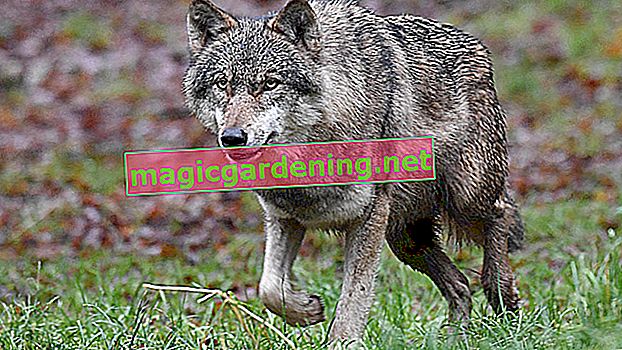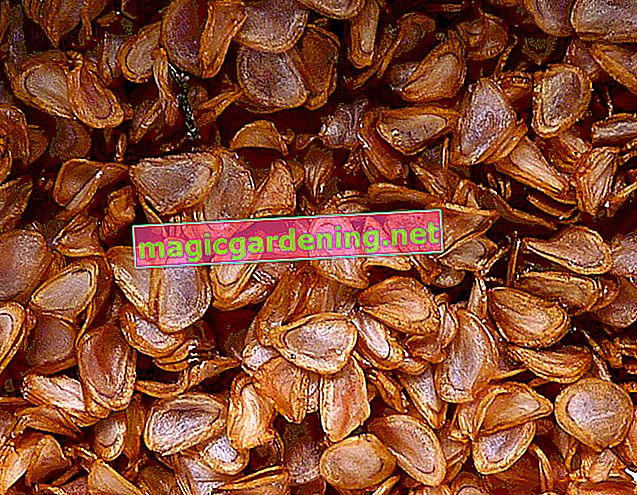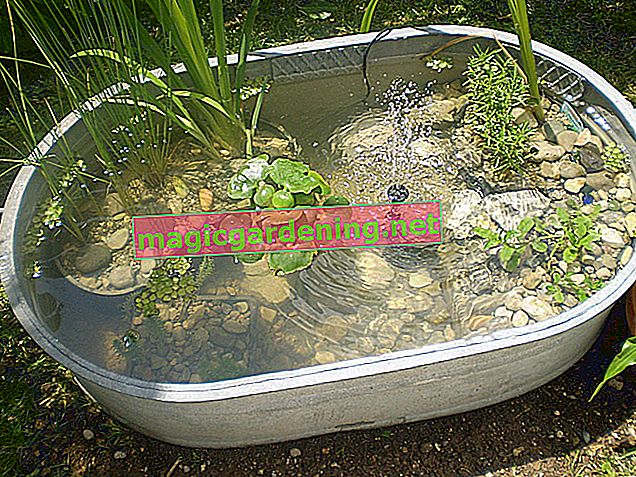
origin
The botanical name of the ranunculus bush is Kerria japonica - also Japanese Kerrie in German. It is therefore not difficult to guess its area of origin in East Asian regions. The rose family is monotypical, so it has no secondary species within its genus. In Central Europe, the ranunculus, which is also known as the golden rose because of its yolk-yellow, pretty flowers, thrives very well because of its climatically not particularly different original habitat. It is frost-resistant and can therefore easily be planted permanently in the garden. The shrub is also used as an ornament in public parks.
also read
- Ranunculus in the tub: planting, care, overwintering
- Ranunculus - all about its flowering period
- Ranunculus - where does it bloom most profusely?
growth
The ranunculus shows a very bushy growth with sparse, sloping side shoots. As a result, it can appear a bit unstructured very quickly and is not necessarily suitable for dense topiary hedges. Rather, you benefit from its airy, casual branch structure for a cheerful spring garden design if you plant it on its own or in a loose neighborhood to other shrub trees. Overall, the golden rose reaches a moderate height of around one to two meters. It forms long root runners and is basically pretty easy to care for.
leaves
In addition to the pretty, cheerful flowers, the foliage of the ranunculus bush also has a beautiful ornamental value. The light green leaves are alternate on the branches and have an elongated, triangular shape with a long, smooth tip. The edge is sharply double serrated and the pronounced veining gives the leaves a distinctive surface structure. Since the foliage sprouts early in the year, the ranunculus offers a good opportunity to green the garden soon after winter. In summer, when flowering takes a break, the fresh green foliage plays the leading role in the appearance of the ranunculus.
blossom
From its yolk-yellow, open-plan flowers, the Kerria japonica has both its main name ranunculus (because of its similarity to those of the buttercup) and its nickname golden rose. They appear in spring and persist until early summer. They are five-fold, plate-shaped cup-shaped flowers with a diameter of about three to 6 centimeters. The flowers of the wild form have many stamens and are simple - some cultivated forms, however, are filled with rosettes.
Heyday
The flowers open in April and delight with their golden yellow color and pretty shape into June. This means that the ranunculus is, so to speak, a replacement for the forsythia that bloomed yellow immediately before. The shrub often re-blooms in autumn, especially the Kerria Pleniflora variety.
Continue reading
fruit
In summer between June and August, small, inconspicuous stone fruits ripen on the Kerrie. They are brown-black in color and have wrinkled skin.
Which location is suitable?
As cheerful and easy-going as the climbing shrub looks, it is also carefree about its location. He has no special demands on the floor or the lighting. It thrives on both slightly acidic and alkaline soils, provided they are reasonably well drained and fresh. He tolerates a spot in the sun as well as a tree shade spot - perhaps he prefers light penumbra. Because in full sun its flowers may fade a little.
The resistance of the ranunculus bush to exhaust gases is also of interest for gardens bordering busy roads or for planting in commercial areas.
Continue reading
What is the best time to plant?
It is best to plant a ranunculus in spring. To prevent excessive spreading, installing a root barrier is worth considering. You can put the root ball in water for better growth.
The correct planting distance
Keep a distance of about half a meter to a full meter from neighboring trees, depending on whether you are planning a cut hedge or a solitary position.
Water ranunculus
The ranunculus is a shallow root and may therefore need additional watering in longer, hot dry phases. Otherwise, no special irrigation supply is necessary outdoors.
Fertilize the ranunculus properly
The ranunculus does not actually have to be fertilized. Let it grow as naturally as possible, because if it is oversupplied with nitrogen, it can be trimmed for growth in such a way that the beautiful bloom does not appear. If you want to do something good for the shrub and make it more resistant to disease, you can add a little compost to it in the spring.
Cut ranunculus properly
Due to its very sparse growth, the ranunculus can quickly look a bit neglected without pruning. Because of its rod-shaped branches, you will not be able to keep the shrub compact. Nevertheless, you should regularly limit it a little so that it does not become bald from the inside and does not suck up the floor.
Since a topiary is basically pointless, the principle of thinning applies to ranunculus. So remove old branches and unsightly growing shoots regularly, preferably immediately after flowering. Since the kerrie shows a strong tendency to runners, you should also contain excess runners by cutting off again and again - preferably before they have taken root. The ranunculus also tolerates a makeover by radical pruning.
The cutting rules at a glance:
- Regular trimming is necessary for a handsome shrub contour
- Topiary not really possible due to the very bulky growth
- Instead: thinning directly after flowering
- Radical pruning is well tolerated
Continue reading
Diseases
The Kerrie is not only extremely frugal in terms of location, but also very insensitive to diseases and pests. In warm, humid weather, however, it can possibly be attacked by fungi. Powdery mildew and blackened soot are a particular risk.
mildew
In powdery mildew, the leaves are covered with a floury coating that gives it its name. They later turn brown-black, dry up and fall off.
You can combat powdery mildew first of all by consistently removing all infected leaves. Do not dispose of them on the compost, but in the residual waste, because the spores can overwinter on organic material. A spray cure made from diluted milk is also suitable for combating this. With advanced and stubborn infestation, you can also use a fungicide, if possible based on neem oil.
Soot
This fungus generally targets the rose family and shows itself by black-brown spots on the leaves that spread like rays. The leaves then turn yellow and are thrown off. Further consequences are a reduction or even a complete absence of flowering and a weakened lignification - this in turn reduces the frost hardiness of the shrub, so that it can die in the long run. Soot black should not be underestimated.
Fighting the fungus is unfortunately not that easy. As with powdery mildew, you should first carefully remove all diseased leaves and dispose of them in household waste. Then apply a spray cure with a fungicide or with more gentle means in the form of horsetail tea or nettle liquid.
The fungal spores of star soot are very stubborn and difficult to eradicate completely. To prevent spreading, you should cover the soil around the shrub with ash or wood shavings and always remove fallen leaves thoroughly. Basically, it is also advisable to protect the shrub prophylactically against infestation by strengthening it with a good supply of nutrients and keeping the leaves as dry as possible. In this way you do not offer the fungus any moist conditions for colonization. So pour only on the root area during dry periods.
Continue reading
Brown spots
Brown spots on the leaves and possibly also on the branches are signs of fungal diseases. You can find out more in the Diseases section.
Continue reading
Propagate ranunculus
Foothills
The easiest way to propagate your ranunculus is to use its willing and numerous runners. All you need to do is carefully pull a rooted specimen out of the ground and put it back in the desired location.
Cuttings
Another option is the cuttings method. Between June and September you can cut head cuttings about 10 cm long from the top of the shrub. If you think about it in June, when the annual pruning is due anyway, you can simply take suitable cuttings from the clippings. They can simply be rooted in a glass of water.
Seeds
The third variant of propagation is sowing seeds. However, it is time-consuming and rather laborious and not recommended in view of the simple alternatives. It is best to place the seeds in planters with potting soil in early spring and keep the substrate evenly moist. Germination can take a few weeks. You can then transplant the young plants and put them outdoors from May, provided the risk of late frosts has been averted.
Continue reading
Is ranunculus poisonous?
The ranunculus is partially toxic to humans. Like some other rose plants, its seeds contain the cyanogenic glycoside amygdalin, which is metabolized and prussic acid is split off. This can lead to slight symptoms of poisoning if consumed in excess, but these are usually limited to nausea and vomiting. If small children live in your household or come to visit more often, you should be vigilant and, if necessary, prevent fruit with seeds from forming by pruning in good time.
For cats and dogs, the toxicity is not insignificant, simply because the dose showing the effects is smaller due to the low body mass. In addition, the four-legged friends can metabolize hydrogen cyanide more poorly than humans, so that if you consume more ranunculus seeds, you may experience not only vomiting but also more severe energy metabolism disorders such as shortness of breath. See a veterinarian as soon as possible.
To note:
- only seeds of the ranunculus bush are indirectly poisonous due to the formation of hydrogen cyanide during metabolism
- quite critical for small children
- a bit more dangerous for cats and dogs
- Prevention: Prevention of seed-bearing fruit formation through timely cutting
Continue reading
Tips
If you want to plant the ranunculus as a loose, light flower hedge, the red dogwood is particularly suitable as a neighboring shrub. Because in the bare winter, its red branches and the green shoots of the ranunculus give off an attractive display of colors and structures.
sorts
The ranunculus is the only species in the genus Kerria, but there are a few different cultivars. These are mainly divided into single and double flowers. Personal taste decides here - the varieties do not differ significantly from the location and care requirements.
Varieties with single flowers
* Kerria japonica Simplex *:
The Kerria japonica Simplex is probably the best-known and most widespread variety of the single-flowered ranunculus bushes. It also resembles the wild form most and impresses with its simple beauty with its five-fold, plate-shaped, golden-yellow flowers that appear in April. The Kerria japonica Simplex becomes one meter high and expands up to two and a half meters in width. It is well suited for light hedge plantations. It should be thinned out regularly.
She prefers a permeable, moderately moist and moderately nutrient-rich soil as a planting base. The Kerria japonica Simplex is a rather partial shade-loving variety and also tolerates full shade. Full sun, however, can bleach your flowers.
* Kerria japonica Golden Guinea *:
This variety also has simple, but slightly larger flowers than the Simplex variety. They appear in a somewhat more limited period from April to May in the same golden yellow. With their relatively good supply of pollen, they are also interesting for insects. The shrub shows a somewhat stiffer growth: it becomes one and a half to two meters high, but remains comparatively narrow with a maximum of 1.20 meters.
The Kerria japonica Golden Guinea is slightly more sun-loving than the Simplex and thrives well in the sun or partial shade. It has no special demands on the floor.
* Kerria japonica Picta *:
The Picta variety is a little less known. Its flowers are quite large and yolk yellow and open between April and the end of May. Often there is still a re-bloom in late summer to autumn. You can encourage this by pruning back after the spring bloom. The Kerria japonica Picta has a special additional charm due to its variegated leaves. As a result, it offers a very decorative sight even during the bloomless summer.
In terms of growth, the Picta is rather low and wide - it is barely one meter in height and around 1.30 meters in width.
The variety thrives best in well-drained, moderately moist, fresh soil that can be alkaline to slightly acidic. In terms of light, penumbra is best for them.
Varieties with double flowers
* Kerria japonica Pleniflora *:
The name of this variety says it all: its flowers appear particularly rich, not only in number, but also in their fullness. With the lush, bright yellow, feathery, ball-shaped rosettes, it is a particularly attractive flower arrangement that you can look forward to in spring between May and June and then again in late summer to autumn.
Its high ornamental value makes the Kerria japonica Pleniflora a suitable shrub in a solitary position, but it also looks good in the flowering hedge. It does not branch much, but with a regular cut you can prevent balding and achieve a good opacity. She is also quite strong. The pleniflora reaches about one and a half to two meters in height and up to one meter in width. The branches hang over slightly when they are older.
As a location, the variety prefers a sunny to partially shaded place and a well-drained soil without a special pH value tendency.








